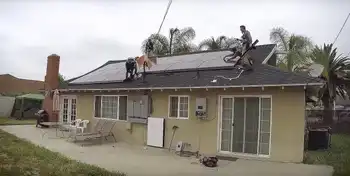Canada approves electric truck in controlled areas
By Reuters
CSA Z462 Arc Flash Training - Electrical Safety Essentials
Our customized live online or in‑person group training can be delivered to your staff at your location.

- Live Online
- 6 hours Instructor-led
- Group Training Available
Lawrence Cannon, the federal minister of transport, said that Ottawa would allow low-speed trucks that operate only on electric power to be sold across Canada.
But he stopped short of saying the vehicles are fit for roads and said their use should be limited to areas such as campuses, parks or retirement communities, where speeds are lower than on public roads.
Ottawa's move was quickly dismissed by Zenn Motor Co, a domestic maker of zero-emission electric cars, as not going far enough.
Toronto-based Zenn, which exports almost all of its vehicles to the United States, said the language used by the federal government is dissuading the 13 provinces and territories from allowing the low-speed electric vehicles to be allowed on roads, despite soaring gasoline prices and the vehicles' environmental benefits.
"They keep saying where these vehicles are supposed to be used and not used and I believe that has a huge influence on what the provinces are allowing," Ian Clifford, Zenn's chief executive, told Reuters. "So, don't just say that these vehicles are not viable, especially given the fact that they are viable in every other market in the world except Canada."
Canada's provincial and territorial governments are responsible for licensing and regulating which vehicles can use roads.
The provinces have been wary of allowing the low-speed electric vehicles on public roads because they lack many of the safety features of regular cars. So far, only British Columbia and Quebec are allowing limited use of the vehicles, on lower speed roads.
Motor vehicle safety regulations require low-speed vehicles to be powered by an electric motor, produce no emissions, have four wheels and reach maximum speeds of between 32 km an hour (20 miles per hour) and 40 km/h.
Clifford said his company's cars meet those requirements and wants to see them allowed on Canadian roads, as they already are in 45 of the 50 U.S. states.
"If the government is not happy with the federal standards for low-speed vehicles then change it," said Clifford.
"Low-speed vehicles are designed for low-speed operating environments and mix with traffic safely and have a vital place... in our urban mix."
Zenn has reaped rewards from steadily rising pump prices that have turned North American motorists away from gas-guzzling trucks and SUVs. It says its cars, which sell for about (US) $16,000, can travel 50 to 80 km (30 to 50 miles) on a single charge, and plug into a regular outlet to recharge.
The company had net sales of $1.3 million ($1.2 million) for the six-month period ended March 31.
Its shares have jumped more than 46 percent in this year.











